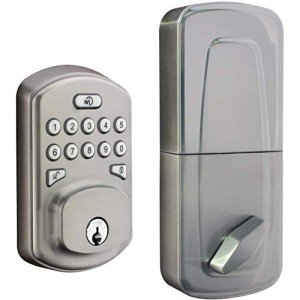7 Simple Tips To Totally Refreshing Your Buy Bathroom Lighting UK
A Comprehensive Guide to Buying Bathroom Lighting in the UK
When it concerns designing or refurbishing a bathroom, lighting is typically an afterthought. Nevertheless, the right lighting is vital for functionality, safety, and looks in this intimate area. In the UK, a range of options are available for bathroom lighting, varying from ambient lighting to job lighting, and accent lighting options. This guide will explore the numerous kinds of bathroom lighting offered in the UK, what to consider while buying, and some regularly asked questions to assist property owners in making notified decisions.
Types of Bathroom Lighting
1. Ambient Lighting
Ambient lighting is the main source of light in any bathroom. It supplies overall lighting and develops a comfortable environment.
- Ceiling fixtures: Flush mounts or enclosed fixtures that provide broad illumination.
- LED panel lights: Recessed or mounted alternatives that provide a modern look.
2. Task Lighting
Job lighting is essential for carrying out specific activities in the bathroom, such as shaving or applying makeup.
- Vanity lights: Mounted above or beside mirrors to supply adequate brightness.
- Downlights: Adjustable fixtures that can target specific areas, such as sinks or counters.
3. Accent Lighting
Accent lighting adds a decorative component and highlights architectural features, art work, or plants in the bathroom.
- Wall sconces: Decorative fixtures that add character and can be positioned at numerous heights.
- LED strip lights: Flexible and flexible, positioned under cabinets or along shelves for a modern touch.
4. Decorative Lighting
Decorative fixtures serve both purpose and style. They can be a focal point in your bathroom design.
- Chandeliers: Ideal for bigger restrooms, providing elegance and beauty.
- Declaration pendant lights: Uniquely developed lights that can boost the decor.
5. Natural Lighting
While not a specific component type, natural light can boost the bathroom environment and decrease the need for synthetic lighting.
- Skylights: Provide ingenious natural light services.
- Windows: Ensure personal privacy while providing adequate lighting during the day.
Table: Key Features of Bathroom Lighting Fixtures
Lighting Type
Function
Design
Positioning
Energy Efficiency
Ambient Lighting
General illumination
Various designs
Ceiling fixtures
Moderate to High
Task Lighting
Specific tasks (e.g., makeup)
Modern to traditional
Above or beside mirrors
Moderate to High
Accent Lighting
Highlights, decoration
Decorative designs
Walls or below racks
Moderate
Decorative Lighting
Visual appeal
Distinct styles
Central points in the room
Low to Moderate
Natural Lighting
Daytime source
N/A
Skylights or windows
N/A
Factors to Consider When Buying Bathroom Lighting in the UK
1. Security Standards
In the UK, particular security regulations need to be fulfilled for bathroom lighting setup. Search for lighting fixtures that comply with the IET Wiring Regulations (BS 7671) and are ranked for usage in damp or moist areas. This is crucial for fixtures positioned near sinks or showers.
2. IP Ratings
The Ingress Protection (IP) ranking indicates how resistant a fixture is to wetness. Restrooms usually require lights with an IP score of at least IP44 to ensure security from splashes of water.
- IP20: Not appropriate for restrooms
- IP44: Suitable for zone 2 locations
- IP65: Suitable for zone 1, can be used in shower enclosures
3. Design and Aesthetics
Think about the overall style of your bathroom while picking lighting. Whether pop over to this website , modern, or minimalist, your fixtures must complement the design.
4. Brightness and Bulbs
Consider the type and brightness of bulbs. LED bulbs are popular for bathroom lighting due to their energy performance and durability. Choose warmer tones for a relaxing ambiance, and ensure sufficient brightness, generally determined in lumens, particularly around mirrors.
5. Adjustability
Consider adjustable fixtures which permit versatile lighting. Dimmable choices can help create the best atmosphere while likewise increasing functionality.
6. Budget
Set a clear budget ahead of time. The rate of bathroom lighting differs widely— from economical fixtures to designer options. Make sure to consider installation if necessary.
7. Eco-Friendliness
With increasing awareness of ecological effect, think about environment-friendly choices. LED lights consume less energy and have longer life-spans compared to traditional bulbs.
Regularly Asked Questions (FAQs)
1. What is the best lighting for a small bathroom?
In little restrooms, it is a good idea to use brilliant ambient lighting combined with task lighting around mirrors. Wall sconces or mirror lights can save area while supplying necessary illumination.
2. Can I use standard lights in the bathroom?
It is important to use lighting fixtures specifically created for restrooms due to moisture and humidity. Ensure they have adequate IP ratings for safety.
3. How high should I set up bathroom sconces?
Bathroom sconces must preferably be set up around eye level, generally about 60-66 inches from the floor to effectively brighten the face without casting shadows.
4. What color temperature is best for bathroom lighting?
A color temperature between 2700K to 3000K is more suitable, as it offers warm, welcoming light that complements skin tones and develops a relaxing environment.
5. Is it required to have a dimmer switch in the bathroom?
While not vital, dimmer switches can enhance flexibility, permitting users to adjust lighting levels according to tasks and activities, which can be especially helpful in a multi-functional area.
Selecting the best bathroom lighting in the UK requires cautious factor to consider of safety, function, and style. By understanding the different types of lighting, examining your requirements and choices, and adhering to safety standards, homeowners can create a well-lit, inviting bathroom area. Equipped with knowledge and awareness of current options, anybody can illuminate their ensuite sanctuary perfectly.
